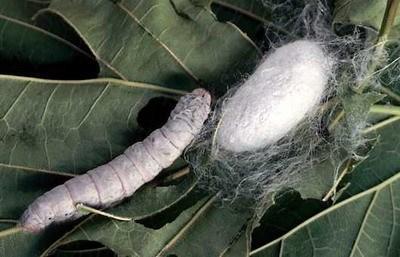
3 minute read
Recent advances in beverage research Easy way to spin nanofibers, inspired by
From the ACS Press Room Recent advances in beverage research
In the U.S., we’re deep in the winter season — a time when many people get sick and feel “under the weather.” To feel better, some people drink antioxidant-containing beverages, such as beetroot juice or elderflower teas, while others might sip whiskey or splash it into hot toddies. Below are recent papers published in ACS journals that report insights into compounds that contribute to the health benefits and aromas of these beverages. .
Advertisement
“Impact of the Anodic and Cathodic Electro-Activation Treatment on the PhysicoChemical and Antioxidant Capacity of Red Beetroot Juice”
ACS Omega
Nov. 8, 2022
The red beet’s bright, vibrant color comes from phenolic compounds and betalains, which also possess antioxidant properties. When these root vegetables are juiced, the resulting drink can have an unpleasant soil-like smell. Previously, heat treatments helped make it smell more palatable, but they reduced the healthful properties. This research team showed that treating beetroot juice with electricity, specifically electro-activation by an anode, produced a more stable juice while maintaining its color and enhancing its antioxidant activity.
“Profiling Selected Volatiles in Whiskey by Fizzy Extraction Time-of-Flight Mass Spectrometry: Correlation with Perceived Quality and Age” ACS Food Science & Technology Oct. 10, 2022
Pouring whiskey into a glass releases its scent into the air, which contributes to the flavor of the liquor. Here, a team developed an approach using microbubbles to trap these volatile compounds — a process called fizzy extraction — and then identified them by mass spectrometry. They tested the technique and quickly analyzed 40 whiskeys from distilleries around the world, finding that ethyl propionate and ethyl butanoate could help determine a bottle’s overall quality.
“Headspace Volatile Organic and Phenolic Compounds in Elderflowers and Elderflower Teas of Blue Elderberry (Sambucus nigra ssp. cerulea)” ACS Food Science & Technology Sept. 13, 2022
Most commercial elderberry flower teas and syrups are made from European plants. But the blue elderberry, a subspecies native to western North America, is starting to be considered for similar drinks. Now, for the first time, researchers have identified the blue elderberry flower’s scent and phenolic compounds. These compounds could be used to make products with unique aromas and different antioxidant compositions compared to products made with European elderflowers, the researchers say.
From the ACS Press Room Easy way to spin nanofibers, inspired by silkworms (video)
“Biomimetic Microadhesion Guided Instant Spinning”
Nano Letters
Did you know that silk fabric is made from … well, worm spit? The way that silkworms wind their cocoons from fibers in their slimy saliva is now helping scientists more easily make new biomedical materials. Researchers reporting in ACS’ Nano Letters have mimicked the seemingly simple head bobbing of silkworms to create more consistent microand nanofibers with less equipment than other approaches.
VIDEO: https://www.youtube.com/ watch?v=XmL2ZF8QvnY
Nanofibers have become an increasingly attractive material for a variety of applications, including wound dressings and flexible electronics. But producing the fibers isn’t always easy, especially because they’re only a few nanometers thick — that’s a few thousand times thinner than the width of a human hair. Most recently developed nanofiber spinning methods are complicated or slow, or they produce clumpy fibers. However, one “scientist” that seems to have solved the problem is the silkworm. This wriggly critter secretes a two-protein solution in its saliva that it continuously pulls into a long, skinny silk thread. The worm then sticks and pulls this single strand repeatedly until it’s wrapped in a silk cocoon, which people unwind to weave into silk textiles. So, Yu
Wang, Wei Yang, Xuewei Fu and colleagues wanted to design a nanofiber spinning method inspired by the silkworm that could produce continuous, uniform filaments in a quick and easy way with minimal equipment. To create the threads, the researchers poked an array of tiny microneedles into a piece of foam soaked with a poly(ethylene oxide) solution, then pulled the needles away in a process called microadhesion-guided (MAG) spinning. Different types of filaments were created by mimicking the way silkworms move their heads when making silk: Pulling straight back resulted in ordered, oriented fibers; swaying or vibrating created crosslinked fibers; and turning the needle array produced a twisted, “all-inone” fiber. Additionally, these threads didn’t wad together, which could occur in previously developed methods. An even more simplified version of MAG spinning didn’t require microneedles. In this case, the foam’s natural roughness acted as the microneedle adhesion points. The researchers simply soaked two pieces of foam with the polymer solution and pulled them apart, easily and instantly spinning threads between them. Using this strategy, they pulled the strands and placed them directly






